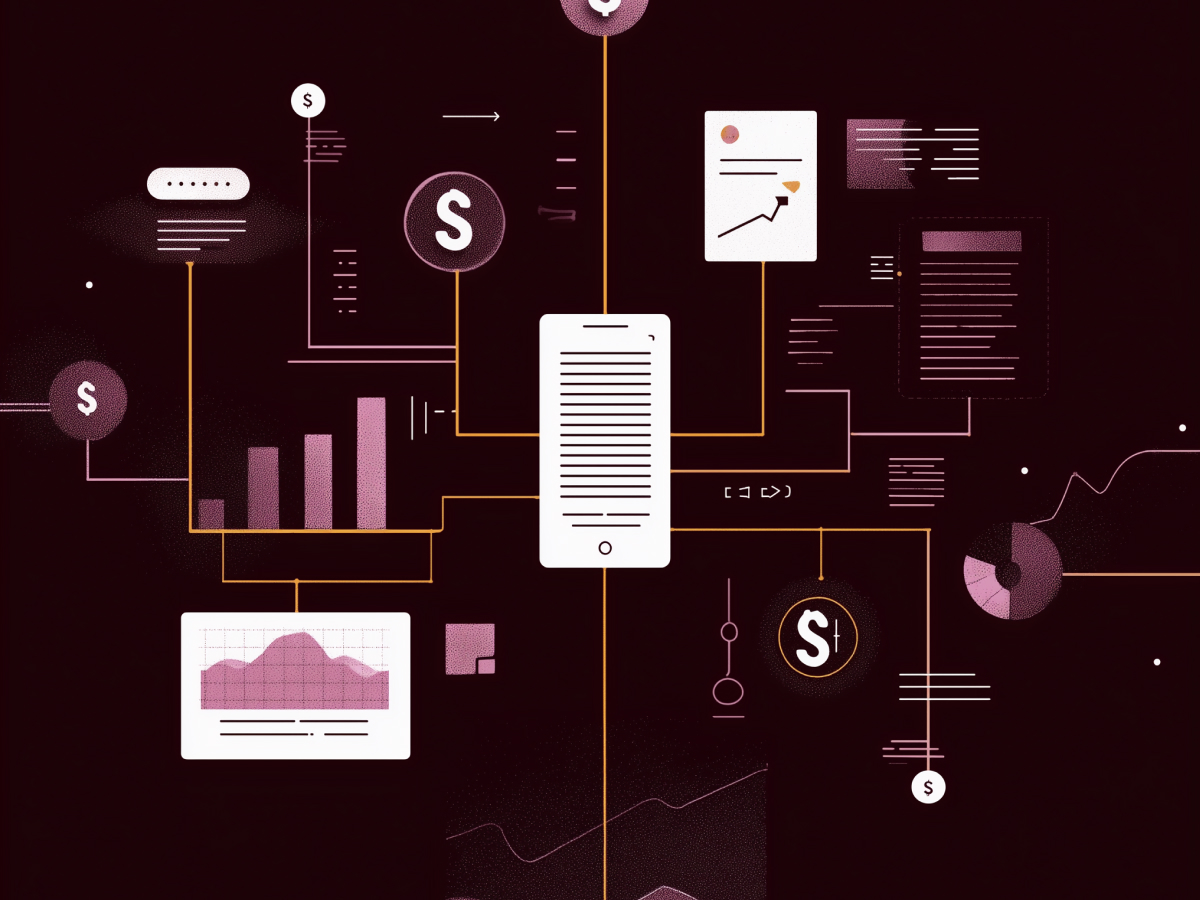Cybersecurity risks and their impact
Cybersecurity is a top concern for businesses today, with significant financial and operational implications.
As technology evolves and digital transformation accelerates, companies face increased risks from cyber threats. Risks can impact all aspects of a business, from revenue and profitability to reputation and customer trust.
Understanding and quantifying these risks is essential for effective risk management and strategic decision-making.
Why cybersecurity is the top business risk you can’t ignore
The prevalence and sophistication of cyber attacks continue to grow, making it almost certain that companies of all sizes and sectors will face these threats in 2024 and beyond.
Cybersecurity poses immense financial threats to businesses.
According to the PwC Pulse Survey, 40% of executives now recognize cybersecurity as their number one business risk. Growing awareness shows the urgent need for comprehensive cybersecurity measures.
Navigating the latest cybersecurity disclosure regulations
The regulatory landscape for cybersecurity is tightening.
The SEC’s July 2023 regulations require businesses to disclose material cybersecurity incidents within four business days and include annual disclosures of cybersecurity risk management, strategy, and governance policies.
Regulations aim to enhance transparency and accountability, prompting companies to adopt more rigorous cybersecurity practices and to be more vigilant in their reporting.
The rising financial toll of cyber attacks
The financial impact of cyber attacks is escalating. IBM’s 2023 report reveals that the average cost of a data breach has surged to $4.45 million, a 15% increase since 2020.
Complementary to this, a PwC study in 2023 indicates that the number of companies experiencing breaches with damages exceeding $1 million has increased by 33%. These statistics highlight the rising costs associated with cyber incidents, from direct financial losses to long-term reputational damage.
Customer trust is also severely affected, with nearly half of surveyed individuals stopping business with companies that have lost their trust due to breaches.
Unlocking the power of cyber risk quantification
Cyber Risk Quantification (CRQ) is a method that provides a concrete measurement of cyber risks. It uses quantitative methodologies, including mathematical frameworks and statistical evaluations, to determine the financial impact of potential cyber threats.
Assigning a monetary value to cyber risks helps CRQ demystify these threats for stakeholders, helping them understand the potential consequences and allocate resources effectively.
Financial risk quantification further helps organizations grasp how cyber risks affect revenue, profitability, and other critical financial aspects, informing better strategic decisions.
Understanding annual cyber losses and their implications
Average Annual Loss (AAL) is a metric that estimates the potential yearly financial loss from cyber events, considering both their frequency and cost.
Finance and Real Estate sectors have the highest AAL at $34.3 million, indicating significant financial exposure despite lower event frequencies. In contrast, the Construction sector has the lowest AAL at $7.3 million.
Presenting this data in terms of probabilities provides a more nuanced understanding, helping companies plan financially.
Industries such as Finance and Real Estate have over a 10% chance of experiencing cyber events costing more than $50 million annually, a significant risk given the daily revenue of a Fortune 1000 company averages around $41 million.
Pinpointing key cyber threats in your industry
In the Retail Trade industry, data breaches are the most significant threat, accounting for 47% of all cyber incidents. The Finance and Real Estate sectors also face high data breach risks at 42%, largely due to their vast data exposures.
Different industries face unique and distinct cyber threats.
Extortion events, while less frequent, still present substantial risks across industries. For instance, Oil, Gas Extraction, Mining, Utilities, and Infrastructure face extortion threats with probabilities ranging from 14% to 19%, while other industries encounter such threats between 27% and 36% of the time.
Strategies to reduce the financial impact of cyber incidents
Mitigating the financial impact of cyber incidents involves addressing the most frequent and costly events.
While interruption events are common, they tend to have lower financial impacts compared to data breaches and extortion events, which can be more devastating. Factors such as third-party liability, regulatory compliance, and productivity loss further amplify the financial consequences of cyber events.
Effective mitigation strategies include comprehensive data protection measures, comprehensive incident response plans, and continuous monitoring to reduce the likelihood and impact of cyber threats.
Overcoming cybersecurity challenges with strategic recommendations
The current cyber risk environment is increasingly complex, requiring businesses to elevate their cybersecurity efforts to match other enterprise risk management standards.
Companies must adopt data-driven initiatives to navigate these challenges effectively. Understanding and preparing for inevitable cybersecurity events is more crucial than ever, with technological advancements introducing new risks continually.
To counter this, organizations must prioritize quantitative approaches to risk assessment to remain resilient in an unpredictable cyber environment. This involves increasing readiness, improving communication with stakeholders, and adhering to the regulatory guidelines.
When making the best use of financial CRQ, businesses can create a tangible framework for managing cyber risks, ensuring they stay competitive and secure in the face of evolving threats.
Prioritizing these steps will help companies lay the groundwork for a thriving business future, despite the pervasive nature of cyber risks.
The need for quantifying cyber risks
Implementing Cyber Risk Quantification (CRQ) provides a clear, data-driven framework for navigating the challenging cyber environment.
Quantifying cyber risk is key for minimizing exposure and improving resilience.
Businesses must adopt these data-backed strategies to safeguard their future in an unpredictable landscape, making sure they can make informed decisions and allocate resources effectively to mitigate cyber threats.
Strategies for effective cyber risk quantification
Adopting a Data-Driven Approach to Cyber Risk Assessment
A quantitative approach to cyber risk quantification (CRQ) is indispensable for financial risk assessments.
When making use of these rigorous methodologies, businesses can generate accurate and actionable insights into the potential financial repercussions of various cyber threats.
Quantitative CRQ provides a comprehensive foundation for appraising risk reduction tactics. It evaluates these tactics based on their economic efficiency and their ability to lessen the probability of cyber incidents.
Understanding the potential financial impact of a ransomware attack versus a denial-of-service attack lets organizations prioritize their cybersecurity investments strategically.
CRQ methods deliver precise data that helps teams make informed decisions, ultimately protecting the company’s financial health and long-term success.
Analyzing annual cost scenarios for better financial planning
Calculating the Average Annual Loss (AAL) is an important metric in CRQ.
AAL estimates the potential yearly financial loss based on the frequency and cost of cyber events which is crucial for comparing how cyber risks impact different sectors and for guiding financial planning and resource allocation.
The Finance and Real Estate sectors have an AAL of $34.3 million, indicating a significant financial risk despite a lower event frequency. On the other hand, the Construction sector has the lowest AAL at $7.3 million. These figures show the varying degrees of financial exposure across industries.
Presenting data in terms of probabilities offers even deeper insights.
The Fortune 1000 Cyber Risk Report found that industries like Finance and Real Estate have over a 10% chance of experiencing cyber events costing more than $50 million in a year. Considering that the daily revenue of a Fortune 1000 company averages around $41 million, this probability-based perspective is invaluable for financial planning and risk management.
Identifying the Cyber Threats Most Likely to Hit Your Industry
Understanding the specific cyber threats that different industries face is key to developing targeted defense strategies. Each sector encounters unique risks, necessitating tailored approaches to cybersecurity.
In the Retail Trade industry, data breaches are the most significant threat, accounting for 47% of all cyber incidents. High percentages reflect the industry’s vast exposure to sensitive customer data.
Similarly, the Finance and Real Estate sectors face substantial data breach risks, with 42% of their cyber incidents being data-related which is largely due to the extensive records and sensitive information these sectors handle.
Extortion events, such as ransomware attacks, present consistent threats across most industries. However, their likelihood varies slightly.
Sectors like Oil, Gas Extraction, Mining, Utilities, and Infrastructure face extortion threats with probabilities ranging from 14% to 19%, while other industries encounter such threats between 27% and 36% of the time.
When focusing on these high-risk events, companies can develop more effective cybersecurity strategies tailored to their specific vulnerabilities.
Tactics to minimize financial loss from cyber attacks
Addressing the financial impact of cyber incidents involves recognizing that the most frequent events are not always the most costly.
While interruption events, such as denial-of-service attacks, are common, their financial impact is often lower compared to data breaches and extortion events, which can be far more devastating.
Several factors can exacerbate the financial consequences of cyber events. Third-party liability, for instance, can significantly increase costs, especially if a breach affects customer or partner data.
Regulatory compliance is another huge factor, as failing to meet legal standards can result in hefty fines and penalties. Productivity loss due to cyber incidents can also lead to substantial financial setbacks.
To mitigate these drivers of loss, companies should implement comprehensive data protection measures, comprehensive incident response plans, and continuous monitoring systems. These steps will help reduce the likelihood and impact of cyber threats, safeguarding the company’s financial health and reputation.
Key takeaways
The cyber risk environment is increasingly complex, requiring businesses to elevate their cybersecurity efforts to match other enterprise risk management standards.
Cyber risks are pervasive and demand data-driven initiatives for effective management. Businesses must stay vigilant and proactive in addressing these challenges, as the consequences of inaction can be severe.
Organizations must prioritize quantitative approaches to risk assessment to remain resilient in an unpredictable cyber environment which involves increasing readiness, improving communication with stakeholders, and complying with regulations to minimize exposure.
When making use of financial CRQ, businesses can create a tangible framework for managing cyber risks, ensuring they stay competitive and secure.
Quantifying cyber risk is essential for minimizing exposure and improving company resilience. Implementing Cyber Risk Quantification (CRQ) provides a clear, data-driven framework for navigating the challenging cyber environment.
Businesses must adopt these data-backed strategies to safeguard their future in an unpredictable market as it lets them make informed decisions and allocate resources effectively to mitigate cyber threats.





